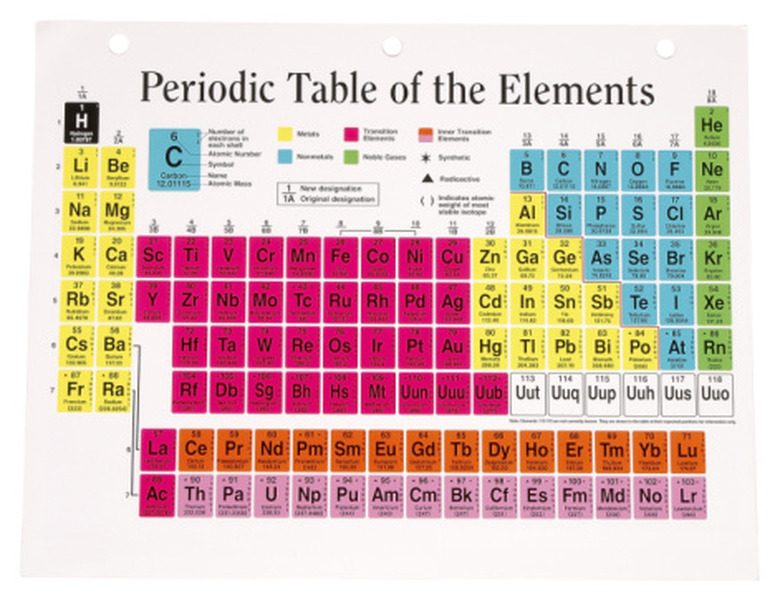How To Find The Molar Mass Of KCl
Molar mass, also known as molecular mass, is the weight of one mole of any chemical compound. A common process in chemistry is to obtain the molar mass of chemical compounds to properly mix them together. With the periodic table and a few simple calculations, you can quickly obtain the molar mass of any chemical compound, including KCl, also known as potassium chloride. Once you know how to obtain the molar mass for KCl, you can easily use the same technique to calculate the molar mass of any chemical.
Step 1
Look up the chemical "K (potassium)" and the chemical "Cl (chlorine) in the periodic table (see Resources). Write down the atomic mass of both potassium and chlorine. For Potassium, the atomic mass is 35.453, and the atomic mass for chlorine is 39.0983.
Step 2
Identify the number of atoms in the chemical compound. For example in KCl, there is only one atom in each of the two chemicals. You can identify if there are more than one atom if there is a subscript written below each chemical symbol. If no subscript is written, then there is only one atom.
Step 3
Calculate for molar mass. Multiply the number of atoms for each chemical multiplied by the atomic mass. Add up the results from multiplying the numbers to obtain the molar mass for the compound. For example for KCl, (1 atom X 39.0983 Potassium) + (1 atom X 35.453 Chlorine) = (74.5513 g/mol) which is the molar mass for KCl.
TL;DR (Too Long; Didn't Read)
Always add "g/mol" to the molar mass to indicate the proper units. This indicates the number of grams per mole.
Cite This Article
MLA
Gutierrez, Louis. "How To Find The Molar Mass Of KCl" sciencing.com, https://www.sciencing.com/molar-mass-kcl-8551896/. 24 April 2017.
APA
Gutierrez, Louis. (2017, April 24). How To Find The Molar Mass Of KCl. sciencing.com. Retrieved from https://www.sciencing.com/molar-mass-kcl-8551896/
Chicago
Gutierrez, Louis. How To Find The Molar Mass Of KCl last modified March 24, 2022. https://www.sciencing.com/molar-mass-kcl-8551896/
